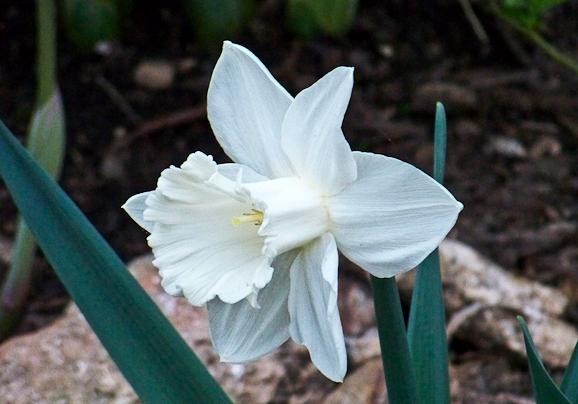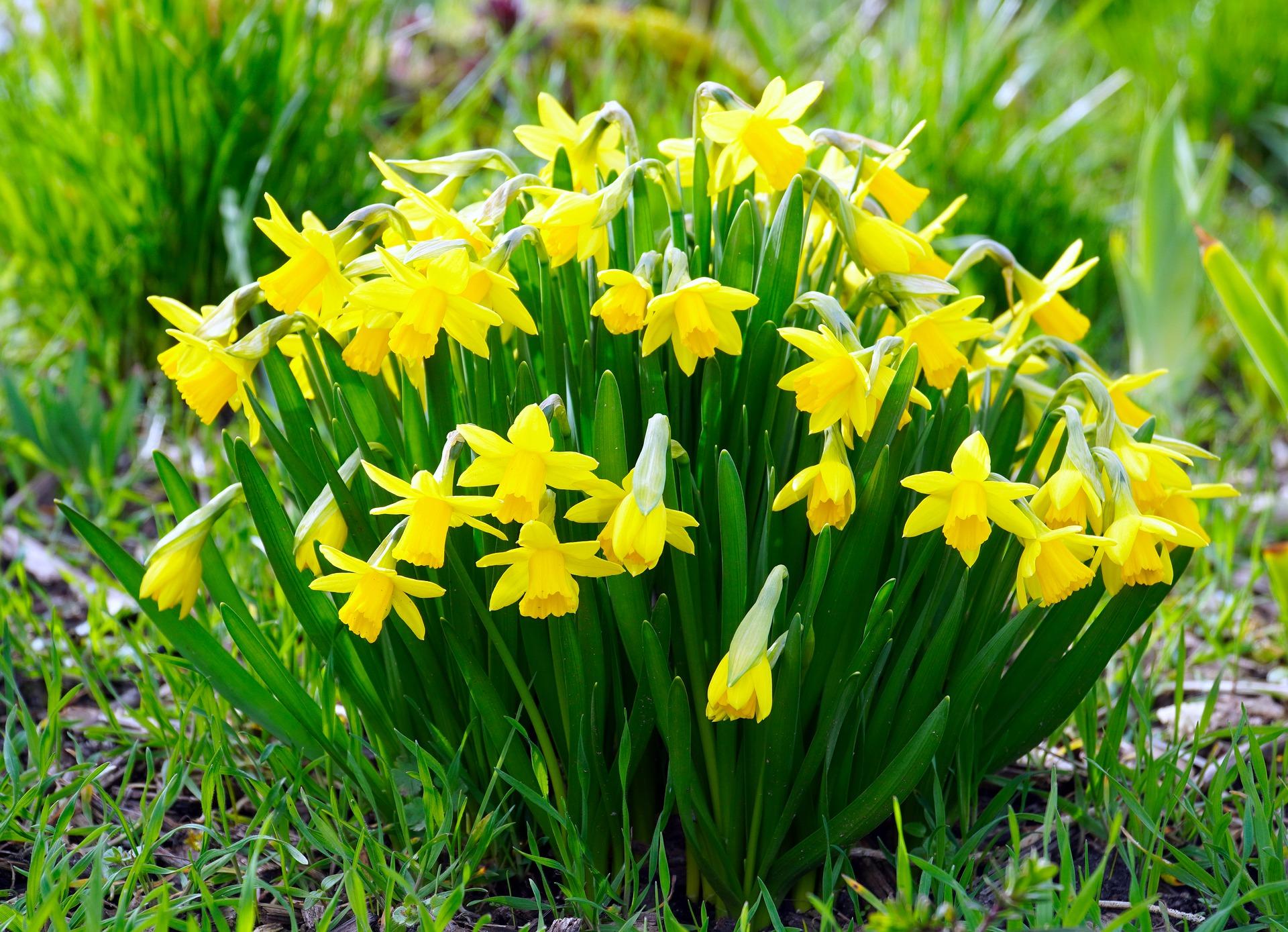Daffodils are native to Europe, North Africa, Western Asia, and the Mediterranean region. Narcissi (daffodils) are one of the oldest cultivated bulbous ornamental plants. They are members of the “Amaryllis” plant family. Today, there are sixty known species and many horticultural varieties.
There are twelve ‘Divisions’ of Narcissus, each with different blossom characteristics based on the size and shape of the trumpet. They come in various shapes, sizes, and colors ─ yellow, white, and even bi-colored with orange or pink.
All types of Narcissi are very long-lived in the landscape; they grow well in our region and will multiply over time forming a large mass of beautiful color. They need good drainage and grow best in full sun locations. As with all types of bulbs, gardeners should leave the foliage intact after blooming. Don’t remove the old foliage until it has yellowed. The foliage produces food for the bulbs to bloom in the next season.
If blossoming is declining in your garden, it’s likely that the plants are too shaded or are overcrowded. After the foliage has turned yellow, lift the bulbs, separate, and replant them. There is no advantage to storing these bulbs until the fall.
Another big plus for Narcissus is that they are toxic; therefore deer, rabbits, and squirrels will not eat them. This cannot be said about tulips and many other bulbs.

Does early emergence harm them?
Fortunately, Narcissus and most other spring bulbs are remarkably cold tolerant. Even when the foliage is exposed to cold weather the damage is limited to some yellowing or browning of the foliage. Flower buds are generally well protected below the soil. Plants with a 2-3 inch layer of mulch are even less likely to be damaged by the cold. The first bulbs to bloom are always in warm ‘micro climate’ locations that receive a lot of sunlight.
Additional resource
This article originally appeared in the Spring 2012 edition of Home and Garden News.
 English
English العربية
العربية Български
Български 简体中文
简体中文 繁體中文
繁體中文 Hrvatski
Hrvatski Čeština
Čeština Dansk
Dansk Nederlands
Nederlands Suomi
Suomi Français
Français Deutsch
Deutsch Ελληνικά
Ελληνικά हिन्दी
हिन्दी Italiano
Italiano 日本語
日本語 한국어
한국어 Norsk bokmål
Norsk bokmål Polski
Polski Português
Português Română
Română Русский
Русский Español
Español Svenska
Svenska Català
Català Filipino
Filipino עִבְרִית
עִבְרִית Bahasa Indonesia
Bahasa Indonesia Latviešu valoda
Latviešu valoda Lietuvių kalba
Lietuvių kalba Српски језик
Српски језик Slovenčina
Slovenčina Slovenščina
Slovenščina Українська
Українська Tiếng Việt
Tiếng Việt Shqip
Shqip Eesti
Eesti Galego
Galego Magyar
Magyar Maltese
Maltese ไทย
ไทย Türkçe
Türkçe فارسی
فارسی Afrikaans
Afrikaans Bahasa Melayu
Bahasa Melayu Kiswahili
Kiswahili Gaeilge
Gaeilge Cymraeg
Cymraeg Беларуская мова
Беларуская мова Íslenska
Íslenska Македонски јазик
Македонски јазик יידיש
יידיש Հայերեն
Հայերեն Azərbaycan dili
Azərbaycan dili Euskara
Euskara ქართული
ქართული Kreyol ayisyen
Kreyol ayisyen اردو
اردو বাংলা
বাংলা Bosanski
Bosanski Cebuano
Cebuano Esperanto
Esperanto ગુજરાતી
ગુજરાતી Harshen Hausa
Harshen Hausa Hmong
Hmong Igbo
Igbo Basa Jawa
Basa Jawa ಕನ್ನಡ
ಕನ್ನಡ ភាសាខ្មែរ
ភាសាខ្មែរ ພາສາລາວ
ພາສາລາວ Latin
Latin Te Reo Māori
Te Reo Māori मराठी
मराठी Монгол
Монгол नेपाली
नेपाली ਪੰਜਾਬੀ
ਪੰਜਾਬੀ Afsoomaali
Afsoomaali தமிழ்
தமிழ் తెలుగు
తెలుగు Yorùbá
Yorùbá Zulu
Zulu ဗမာစာ
ဗမာစာ Chichewa
Chichewa Қазақ тілі
Қазақ тілі Malagasy
Malagasy മലയാളം
മലയാളം සිංහල
සිංහල Sesotho
Sesotho Basa Sunda
Basa Sunda Тоҷикӣ
Тоҷикӣ O‘zbekcha
O‘zbekcha አማርኛ
አማርኛ Corsu
Corsu Ōlelo Hawaiʻi
Ōlelo Hawaiʻi كوردی
كوردی Кыргызча
Кыргызча Lëtzebuergesch
Lëtzebuergesch پښتو
پښتو Samoan
Samoan Gàidhlig
Gàidhlig Shona
Shona سنڌي
سنڌي Frysk
Frysk isiXhosa
isiXhosa